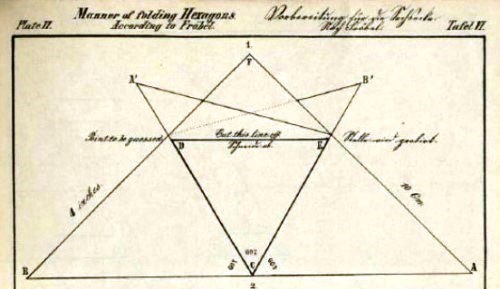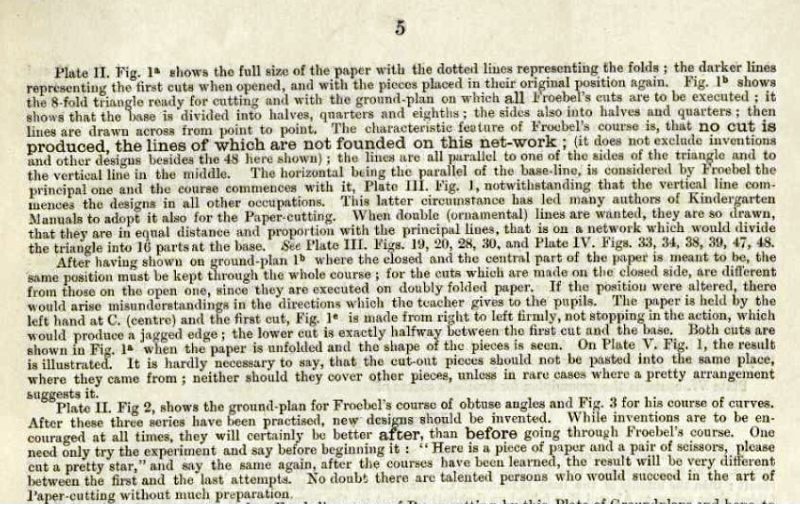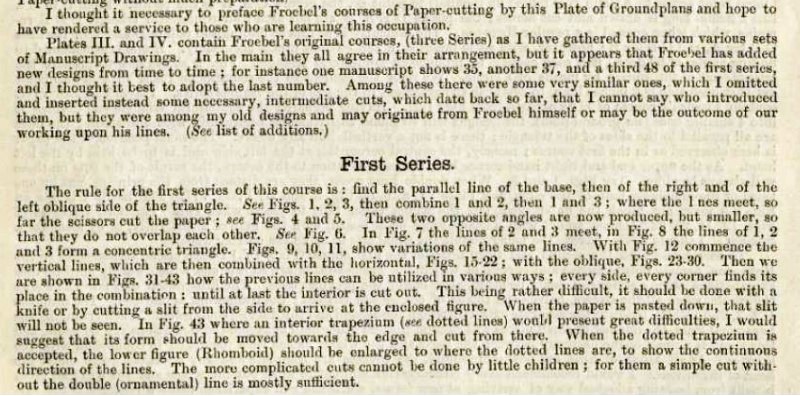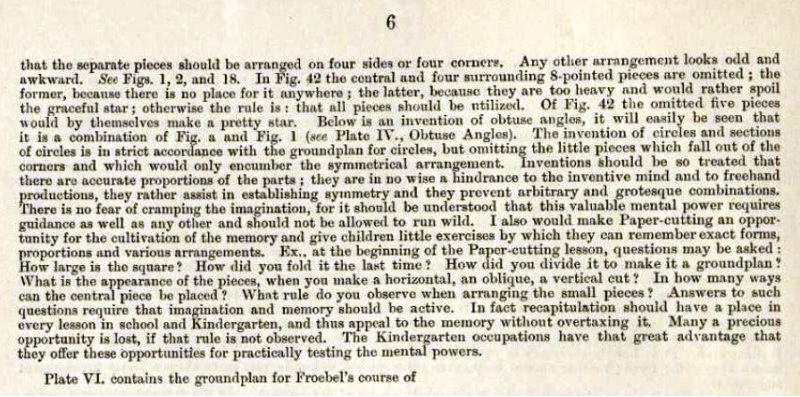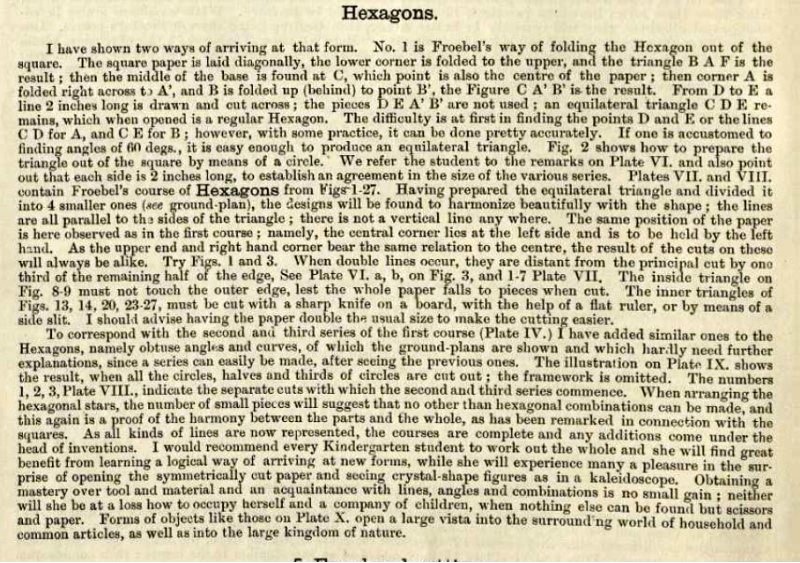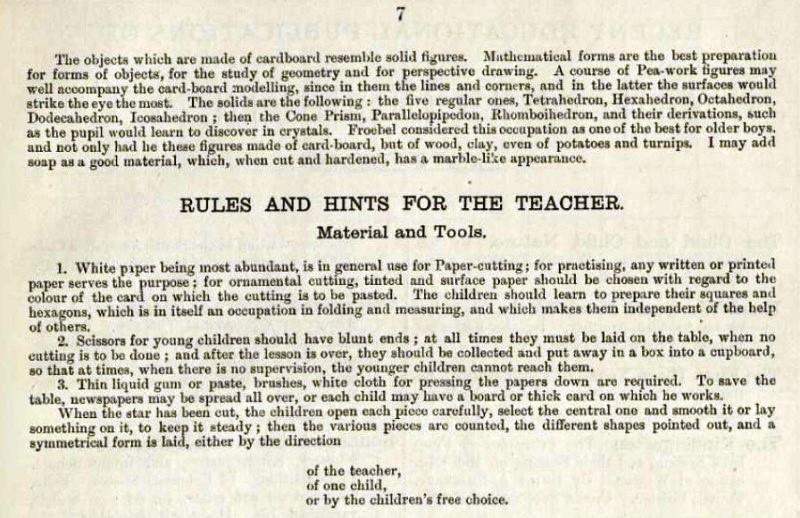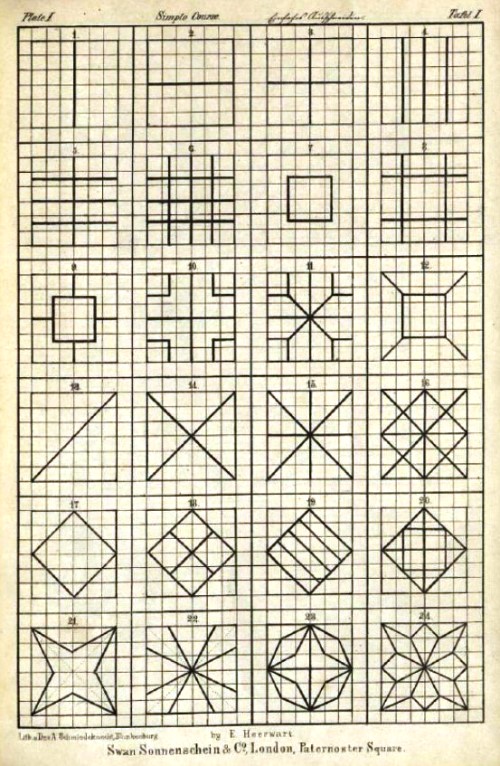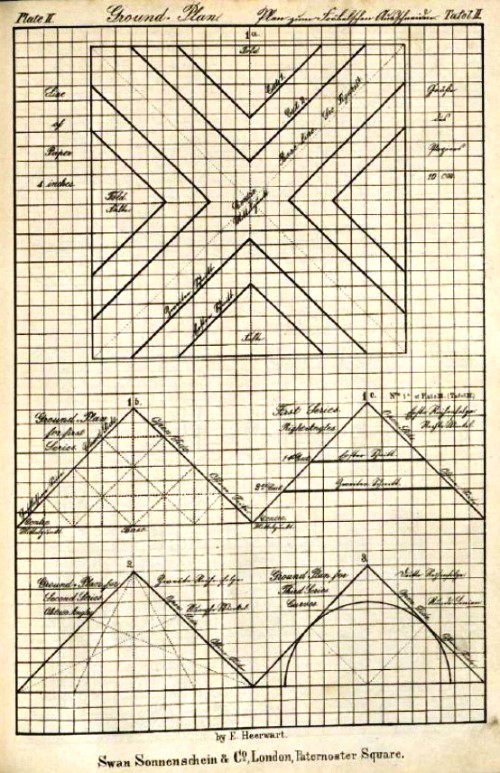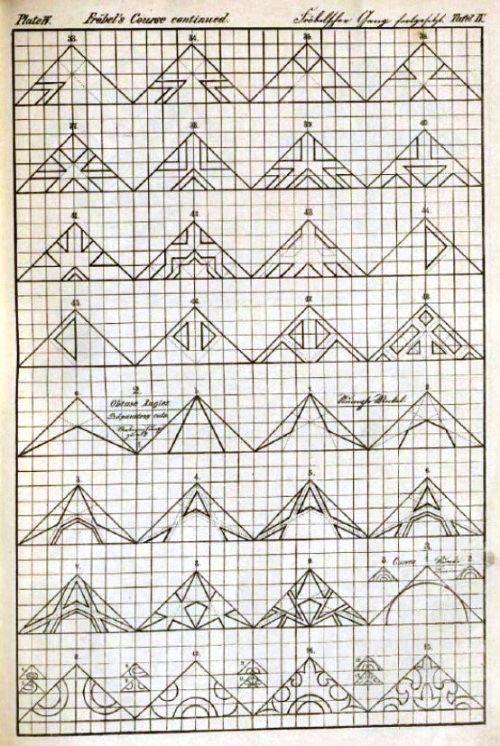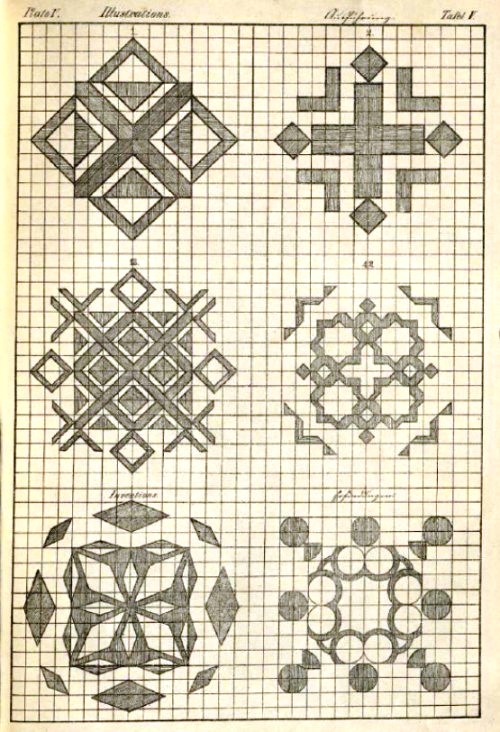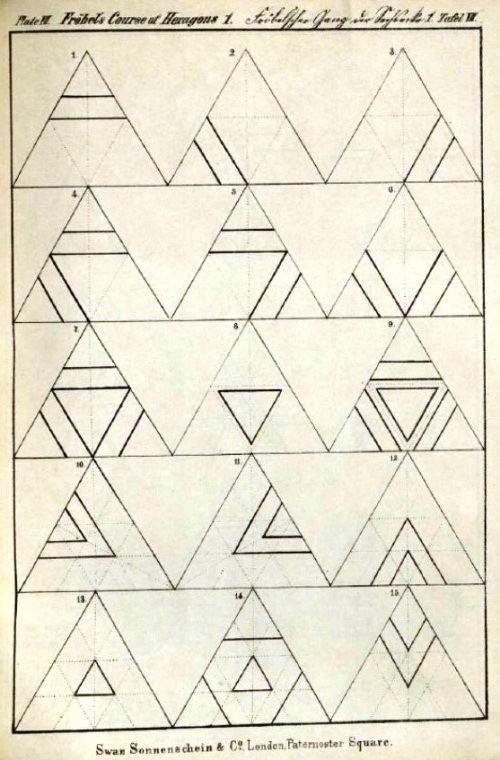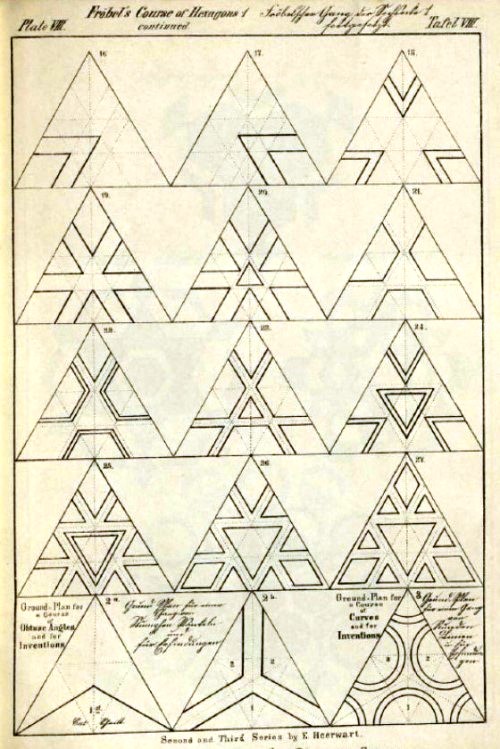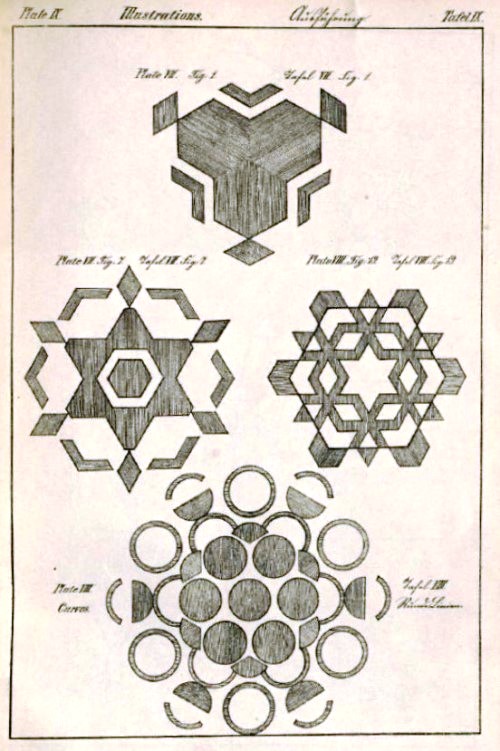| The Public Paperfolding History Project
Last updated 22/11/2025 x |
|||||||
| Friedrich Fröbels Course of Paper-Cutting by Eleonore Heerwart, 1889 | |||||||
'Friedrich Fröbels Course of Paper-Cutting' by Eleonore Heerwart was published by Swan Sonnenschein and Co in London in 1889.It is, as the title says, a description of Froebel's own Course of Paper-Cutting (Ausschneiden und Aufkleben, although with additional material added by the author. However, the author clearly differentiates between Froebel's original course and the later additions. About the paper to be used for Paper-Cutting the author says:
A full copy of the work can be accessed online here. **********
********** Historical Information The author states that Froebel left 'directions and designs' for some of the occupations, including Paper-folding, Paper-cutting, and Paper-twisting (presumably Verschnuren) although these do not include lithographical prints or drawings, and that these 'courses' are in the possession of 'Froebel's widow and his own pupils or friends'.
********** The author states that Froebel adapted the existing activity of paper-cutting 'which is distinguished by its logical sequence'.
********** Around 1879, Herr Koehler in Gotha (ie August Koehler) suggested a simpler kind of paper-cutting 'as a preparation of the more difficult cutting of Froebel's course'.
********** The author states that 'Froebel used to cut 16 squares out of a sheet of foolscap ... The size of the 16 squares would depend on the size of the sheet of foolscap, therefore vary'.
********** The author gives Froebel's original Ausschneiden and Aufkleben designs in Plates 3 and 4 (see below), which include designs made from the hexagon as well as from the square.
********** Froebel's Fold and One Cut Method of Constructing a Hexagon from a Square The author attributes the method of obtaining a hexagon from a square (shown below) by first folding it in half diagonally then crossing the outside corners to create a 60 degree angle etc to Froebel.
********** The author states that Froebel considered Cardboard Modelling (specifically the making of polyhedra) 'as one of the best for older boys'.
********** Full text
********** The Plates Plate 1 - The designs on this Plate are Heerwart's work not Froebel's
********** Plate 2 - This is Heerwart's work not Froebel's
********** Plate 3 - All of these designs are Froebel's except 6, 21 and 23 to 27.
********** Plate 4 - All of these designs are Froebel's except 34, 36, 44 to 47and those designs on the lower half of the page which use curves and obtuse angles.
********** Plate 5 - Hewerwart's comment is 'Two inventions - obtuse angles and curves' which I take to mean that the top four designs are Froebel's and the lower two Heerwart's, although this is not entirely clear.
********** Plate 6 - Plate 2 - This is Heerwart's work not Froebel's
********** Plate 7 - These are Froebel's work
********** Plate 8 - Designs 16 to 20 are Froebel's, the others, ie those with obtuse angles and curves, are by Heerwart.
********** Plate 9 - The author makes no comment about thgis Plate. The lowewr design is clearly by Heerwart. It seems to me that the others are probably by Froebel.
********** |
|||||||







